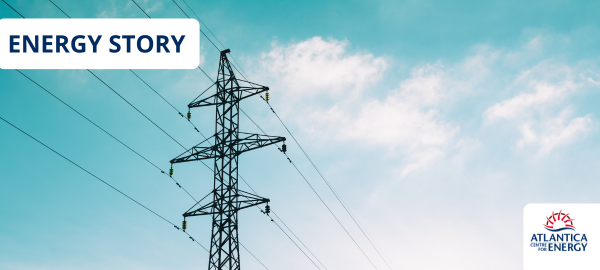New Brunswick’s electricity system is about to see its biggest upgrades in several years. This summer, NB Power announced two major initiatives – a new 500-megawatt generating station in Westmorland County and more than $300 million in improvements to the utility’s transmission system.
The new generating station will provide needed flexible and dispatchable power to complement a growing number of renewable energy sources on the grid (wind and solar). The transmission projects will strengthen key lines and equipment that move electricity across the province. NB Power says these steps are needed because electricity use in New Brunswick is growing faster than expected, and the grid must be prepared to handle higher demand, while keeping electricity reliable for homes, businesses, and communities.
The RIGS project
On July 14, 2025, NB Power announced its Renewable Integration and Grid Security (RIGS) project. This is the first new generating station the utility has added in more than 20 years. The 500-megawatt peaking plant will be built in Centre Village, near the Nova Scotia border and to the Maritimes & Northeast Pipeline to provide a secure supply of natural gas. The project is expected to be ready by 2028.
The station will use dual-fuel combustion turbines. This means it can run on more than one type of fuel, giving the system flexibility in case the supply changes, and is expected to use natural gas initially. It is important to note that the station will be used when it’s needed, and is not expected to operate the majority of the year. The project also includes adding synchronous condensers, machines that help keep electricity flowing smoothly and prevent sudden voltage changes. This is especially important as more renewable energy, such as wind and solar, is added to the system – sources that depend on weather and can’t always produce power when it’s needed most.
NB Power has partnered with PROENERGY, which will design, build, own, and operate the facility under a 25-year contract. The company has committed to hiring local contractors and labour during construction, bringing economic benefits to the region. The North Shore Mi’kmaq Tribal Council is also an important project partner.
NB Power says the project will reduce emissions overall with less reliance on aging oil and coal-fired backup units and decrease the province’s need for imported electricity from outside New Brunswick.
Public consultations for the project are underway through the Environmental Impact Assessment process. More information is available here.
Approved transmission upgrades
On July 25, 2025, the New Brunswick Energy & Utilities Board (NBEUB) approved NB Power’s request to move forward with three large transmission projects, valued at more than $300 million in total. These projects will improve the province’s high-voltage system, which moves power long distances from generating stations to local distribution networks.
The upgrades include:
- Two new 138-kilovolt transmission lines between Coleson Cove and Fairvale, adding capacity to serve the growing Saint John region.
- A third 345/138 kV tie transformer at Coleson Cove Generating Station, which allows high-voltage power to be stepped down safely and reduces the risk of shortages during peak demand.
- A ±300 MVAr static synchronous compensator (STATCOM), which injects or absorbs reactive power to stabilize voltage when the grid is under stress. This is especially important during extreme weather or sudden shifts in demand.
NB Power’s 2023 planning assessment found that without these upgrades, the province could fail to meet North American Electric Reliability Corporation (NERC) standards, which could lead to outages. Independent experts agreed that these were the most effective and cost-efficient projects.
Consultations for these projects are underway through the Environmental Impact Assessment and are available online.
What this means for you
For customers, these projects help New Brunswick’s electrical grid reduce overall emissions while remaining reliable. These initiatives also bring jobs and local investment during construction, with contractors and workers hired from New Brunswick.
Key terms explained
Dual-fuel combustion turbine: a generator that can switch between fuels (such as natural gas or oil) to produce electricity.
Synchronous condenser: a machine that helps keep voltage stable and supports renewable energy integration.
Transformer: equipment that changes electricity from a very high voltage to a lower voltage so it can be used on the grid.
STATCOM (static synchronous compensator): a device that injects or absorbs power to stabilize voltage during stress on the system.
NERC standards: rules set by the North American Electric Reliability Corporation to ensure electricity systems stay safe and reliable.
Sources
- NB Power News Release
- NBEUB Decision Document (PDF)

